-
 Bitcoin
Bitcoin $90,752.5471
4.27% -
 Ethereum
Ethereum $1,688.3053
6.41% -
 Tether USDt
Tether USDt $1.0006
0.08% -
 XRP
XRP $2.1453
3.23% -
 BNB
BNB $607.1447
1.71% -
 Solana
Solana $144.2444
7.14% -
 USDC
USDC $0.9997
-0.01% -
 Dogecoin
Dogecoin $0.1703
8.31% -
 TRON
TRON $0.2467
1.46% -
 Cardano
Cardano $0.6557
5.58% -
 Chainlink
Chainlink $13.7511
5.08% -
 Avalanche
Avalanche $21.5976
7.79% -
 UNUS SED LEO
UNUS SED LEO $8.9863
-1.47% -
 Stellar
Stellar $0.2566
1.55% -
 Sui
Sui $2.3975
10.43% -
 Shiba Inu
Shiba Inu $0.0...01300
5.63% -
 Toncoin
Toncoin $2.9806
2.64% -
 Hedera
Hedera $0.1760
4.31% -
 Bitcoin Cash
Bitcoin Cash $355.4488
3.40% -
 Litecoin
Litecoin $82.9174
5.86% -
 Hyperliquid
Hyperliquid $18.6132
6.14% -
 Polkadot
Polkadot $3.8737
1.18% -
 Dai
Dai $0.9998
0.01% -
 Bitget Token
Bitget Token $4.5191
1.97% -
 Ethena USDe
Ethena USDe $0.9996
0.04% -
 Pi
Pi $0.6386
1.01% -
 Monero
Monero $220.4697
3.17% -
 Pepe
Pepe $0.0...08356
7.90% -
 Uniswap
Uniswap $5.5839
5.52% -
 Aptos
Aptos $5.0800
1.52%
What is the cross-chain communication protocol for blockchain?
Cross-chain communication protocols enable secure asset and data exchange between blockchains, enhancing interoperability and scalability in the crypto ecosystem.
Apr 12, 2025 at 04:28 pm
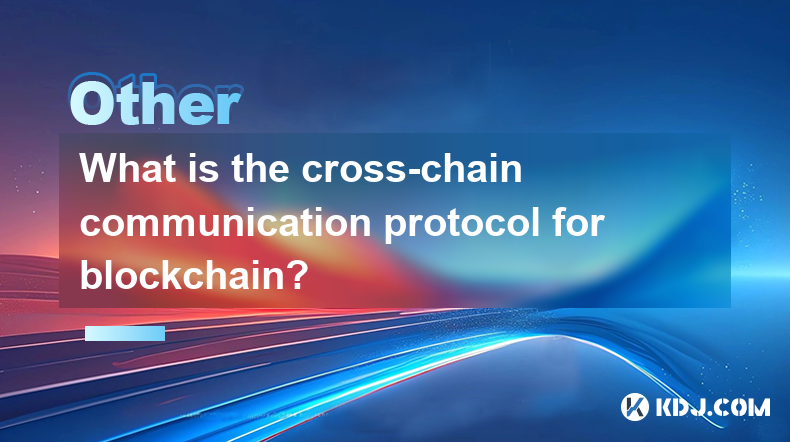
Cross-chain communication protocols are essential mechanisms that enable different blockchain networks to interact and exchange information or assets securely. These protocols bridge the gap between isolated blockchains, allowing them to operate as a cohesive ecosystem. Understanding how these protocols work and their significance in the cryptocurrency world is crucial for anyone involved in blockchain technology.
What are Cross-Chain Communication Protocols?
Cross-chain communication protocols are sets of rules and standards that facilitate the transfer of data or assets between different blockchain networks. These protocols are designed to overcome the inherent limitations of blockchains, which are typically closed systems that do not natively interact with one another. By enabling interoperability, these protocols play a pivotal role in enhancing the functionality and utility of blockchain networks.
The primary goal of cross-chain communication protocols is to allow users to seamlessly move assets or information across different blockchains without compromising security or decentralization. This interoperability can lead to more efficient and versatile blockchain ecosystems, where users can leverage the strengths of multiple networks.
Types of Cross-Chain Communication Protocols
There are several types of cross-chain communication protocols, each with its own approach to achieving interoperability. Some of the most common types include:
Sidechains: These are separate blockchains that are linked to a main blockchain. Assets can be moved between the main chain and the sidechain, allowing for increased scalability and flexibility. An example of a sidechain protocol is the Liquid Network, which is linked to the Bitcoin blockchain.
Relays: These protocols use a third-party blockchain to relay information between two or more blockchains. The relay blockchain acts as a bridge, ensuring that data is accurately transferred between the networks. An example of a relay protocol is the Cosmos Network, which uses the Inter-Blockchain Communication (IBC) protocol to enable cross-chain communication.
Notarization: This approach involves one blockchain verifying the state of another blockchain. By notarizing the state of another chain, a blockchain can ensure the integrity of the data being transferred. An example of a notarization protocol is the BTC Relay, which allows Ethereum smart contracts to verify Bitcoin transactions.
Hash-Locking: This method uses cryptographic hash functions to lock assets on one blockchain until a condition is met on another blockchain. Once the condition is fulfilled, the assets can be unlocked and transferred. An example of a hash-locking protocol is the Lightning Network, which enables instant Bitcoin transactions through hash time-locked contracts.
How Do Cross-Chain Communication Protocols Work?
The specific mechanisms of cross-chain communication protocols can vary depending on the type of protocol being used. However, the general process involves several key steps:
Initiation: The process begins when a user initiates a cross-chain transaction. This could involve transferring assets from one blockchain to another or executing a smart contract that requires data from multiple blockchains.
Verification: The transaction or data is verified by the nodes on the source blockchain. This ensures that the transaction is valid and that the user has the necessary permissions to initiate the cross-chain transfer.
Transfer: Once verified, the transaction or data is transferred to the destination blockchain. This can be done through various methods, such as locking assets on the source chain and unlocking them on the destination chain, or by relaying the data through a third-party blockchain.
Confirmation: The transaction or data is then confirmed on the destination blockchain. This involves verifying the integrity of the transferred data and ensuring that it meets the requirements of the destination blockchain.
Completion: Once confirmed, the cross-chain transaction is complete, and the assets or data are available on the destination blockchain. The user can then interact with the assets or data as needed.
Benefits of Cross-Chain Communication Protocols
Cross-chain communication protocols offer several significant benefits to the blockchain ecosystem:
Interoperability: By enabling different blockchains to interact, these protocols allow for a more interconnected and versatile blockchain ecosystem. Users can leverage the strengths of multiple networks, leading to more efficient and powerful applications.
Scalability: Cross-chain protocols can help address the scalability issues faced by many blockchains. By offloading transactions to sidechains or other networks, the main blockchain can process transactions more efficiently.
Enhanced Security: By allowing blockchains to verify the state of other chains, cross-chain protocols can enhance the overall security of the ecosystem. This can help prevent fraud and ensure the integrity of cross-chain transactions.
Increased Liquidity: By enabling the seamless transfer of assets between different blockchains, cross-chain protocols can increase the liquidity of digital assets. This can lead to more active and vibrant markets.
Challenges and Considerations
While cross-chain communication protocols offer significant benefits, they also come with several challenges and considerations:
Security Risks: Cross-chain transactions can introduce new security risks, as they involve interacting with multiple blockchains. Ensuring the security of these transactions is crucial to maintaining the integrity of the ecosystem.
Complexity: Implementing cross-chain communication protocols can be complex and requires a deep understanding of both the source and destination blockchains. This complexity can make it challenging to develop and maintain these protocols.
Standardization: There is currently a lack of standardization in cross-chain communication protocols, which can lead to compatibility issues between different networks. Developing common standards and protocols is essential for achieving widespread interoperability.
Regulatory Compliance: Cross-chain transactions may be subject to different regulatory requirements depending on the jurisdictions involved. Ensuring compliance with these regulations can be challenging and may require additional infrastructure and processes.
Examples of Cross-Chain Communication Protocols
Several cross-chain communication protocols have been developed to address the need for interoperability in the blockchain ecosystem. Some notable examples include:
Polkadot: Polkadot is a multi-chain framework that enables different blockchains to interoperate and share information. It uses a relay chain to facilitate communication between parachains, which are individual blockchains within the Polkadot network.
Cosmos: Cosmos is a network of interconnected blockchains that use the Inter-Blockchain Communication (IBC) protocol to enable cross-chain communication. The Cosmos Hub acts as a central point for relaying information between different blockchains.
Wanchain: Wanchain is a blockchain platform that enables cross-chain transactions between different cryptocurrencies. It uses a decentralized network of nodes to facilitate the transfer of assets between blockchains.
Thorchain: Thorchain is a decentralized liquidity network that enables cross-chain swaps between different cryptocurrencies. It uses a network of nodes to facilitate the exchange of assets between different blockchains.
Frequently Asked Questions
Q: How do cross-chain communication protocols ensure the security of transactions?
A: Cross-chain communication protocols ensure the security of transactions through various mechanisms, such as cryptographic hash functions, notarization, and multi-signature verification. These mechanisms help verify the integrity of the data being transferred and ensure that transactions are executed securely.
Q: Can cross-chain communication protocols be used for decentralized finance (DeFi) applications?
A: Yes, cross-chain communication protocols can be used for decentralized finance (DeFi) applications. By enabling the seamless transfer of assets between different blockchains, these protocols can enhance the liquidity and functionality of DeFi platforms, allowing users to access a wider range of financial services.
Q: What are the potential scalability benefits of using cross-chain communication protocols?
A: Cross-chain communication protocols can help improve scalability by offloading transactions to sidechains or other networks. This can reduce the load on the main blockchain, allowing it to process transactions more efficiently and handle a higher volume of transactions.
Q: Are there any privacy concerns associated with cross-chain communication protocols?
A: Yes, there can be privacy concerns associated with cross-chain communication protocols, as they involve the transfer of data between different blockchains. Ensuring the privacy of these transactions may require additional measures, such as zero-knowledge proofs or other privacy-enhancing technologies.
Disclaimer:info@kdj.com
The information provided is not trading advice. kdj.com does not assume any responsibility for any investments made based on the information provided in this article. Cryptocurrencies are highly volatile and it is highly recommended that you invest with caution after thorough research!
If you believe that the content used on this website infringes your copyright, please contact us immediately (info@kdj.com) and we will delete it promptly.
- Bitcoin (BTC) Price Surges to Two-Week High, Breaking Above $90,000
- 2025-04-23 01:00:12
- Popcat (POP) Price Soars Over 20% As Investors Rush To Buy The Meme Coin
- 2025-04-23 01:00:12
- Bitcoin (BTC) hits six-week highs as US trade war tensions embolden crypto bulls
- 2025-04-23 00:55:12
- An Encouraging Situation for Polygon
- 2025-04-23 00:55:12
- The European Central Bank (ECB) is the alarm about President Trump's policy
- 2025-04-23 00:50:12
- SUBBD Token Aims to Disrupt the $85000000000 Content Creation Market by Targeting OnlyFans
- 2025-04-23 00:50:12
Related knowledge
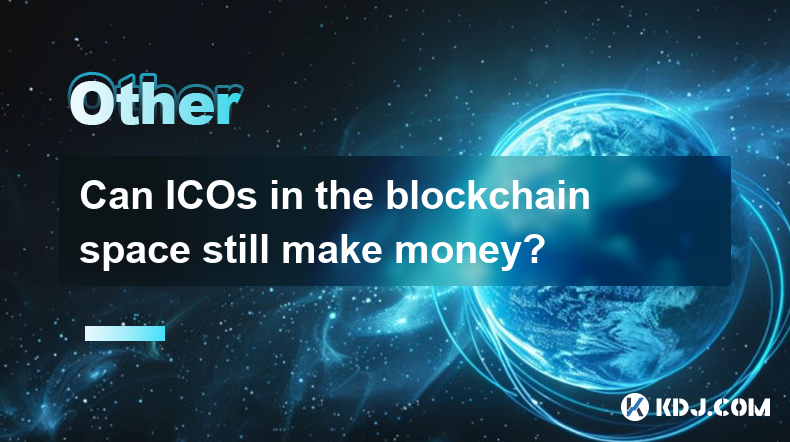
Can ICOs in the blockchain space still make money?
Apr 17,2025 at 08:29pm
The landscape of Initial Coin Offerings (ICOs) in the blockchain space has evolved significantly since their peak in 2017 and 2018. Despite the increased regulatory scrutiny and the rise of alternative fundraising methods like Security Token Offerings (STOs) and Initial Exchange Offerings (IEOs), ICOs can still be a viable way to raise funds and generat...

Can the application of blockchain in supply chain finance bring benefits?
Apr 15,2025 at 04:00pm
Can the application of blockchain in supply chain finance bring benefits? The integration of blockchain technology into supply chain finance has garnered significant attention in the cryptocurrency and financial sectors. This article explores how blockchain can potentially revolutionize supply chain finance, detailing its benefits and providing a compre...
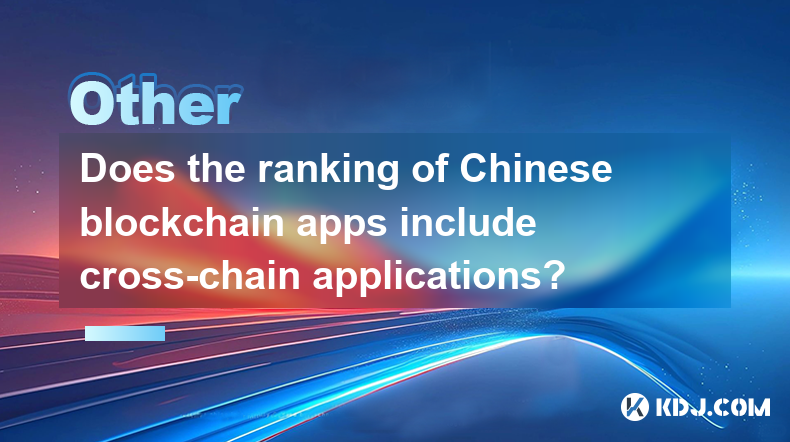
Does the ranking of Chinese blockchain apps include cross-chain applications?
Apr 14,2025 at 04:00pm
The ranking of Chinese blockchain apps is a comprehensive evaluation that takes into account various aspects such as user base, transaction volume, and technological innovation. A pertinent question arises regarding whether these rankings include cross-chain applications. Cross-chain applications, which allow different blockchain networks to interact an...
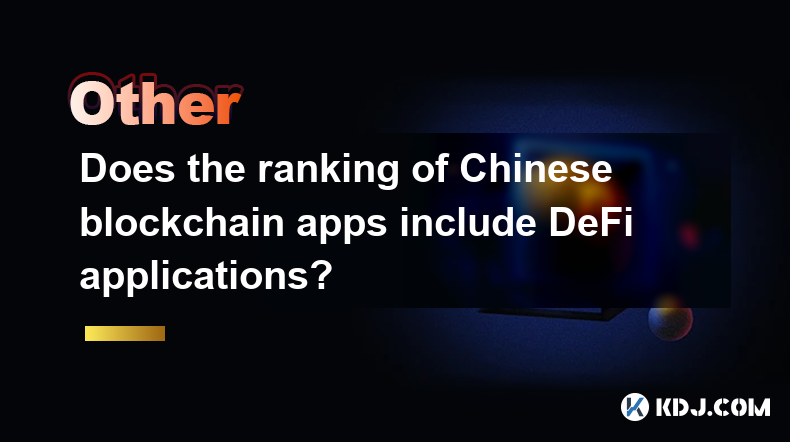
Does the ranking of Chinese blockchain apps include DeFi applications?
Apr 15,2025 at 06:57am
The ranking of Chinese blockchain apps is a comprehensive list that showcases the most popular and influential applications within the cryptocurrency ecosystem. One question that often arises is whether these rankings include DeFi applications. To answer this, we need to delve into the specifics of how these rankings are compiled and what types of appli...
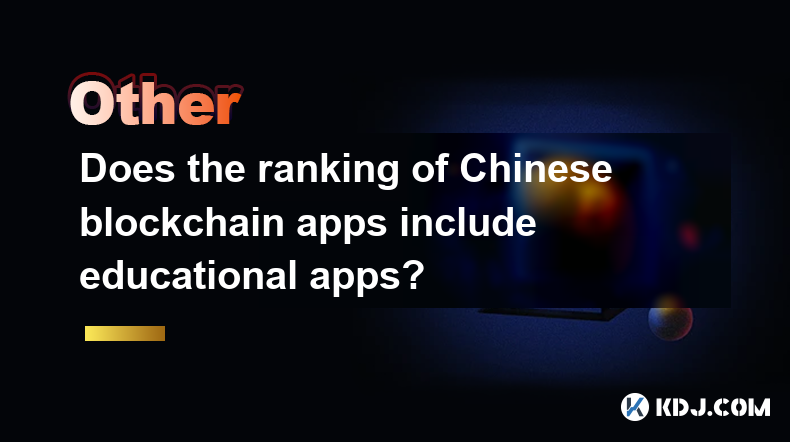
Does the ranking of Chinese blockchain apps include educational apps?
Apr 16,2025 at 03:35am
The ranking of Chinese blockchain apps often includes a variety of categories, from finance and gaming to social networking and beyond. One question that frequently arises is whether these rankings include educational apps. To address this, we need to delve into the specifics of how blockchain apps are categorized and ranked in China, and whether educat...
Does the ranking of Chinese blockchain apps include enterprise-level applications?
Apr 15,2025 at 06:42am
The ranking of Chinese blockchain apps often includes a variety of applications, ranging from consumer-focused to enterprise-level solutions. Understanding the scope and criteria for these rankings is essential to determine if enterprise-level applications are included. This article delves into the specifics of how Chinese blockchain app rankings are co...

Can ICOs in the blockchain space still make money?
Apr 17,2025 at 08:29pm
The landscape of Initial Coin Offerings (ICOs) in the blockchain space has evolved significantly since their peak in 2017 and 2018. Despite the increased regulatory scrutiny and the rise of alternative fundraising methods like Security Token Offerings (STOs) and Initial Exchange Offerings (IEOs), ICOs can still be a viable way to raise funds and generat...

Can the application of blockchain in supply chain finance bring benefits?
Apr 15,2025 at 04:00pm
Can the application of blockchain in supply chain finance bring benefits? The integration of blockchain technology into supply chain finance has garnered significant attention in the cryptocurrency and financial sectors. This article explores how blockchain can potentially revolutionize supply chain finance, detailing its benefits and providing a compre...

Does the ranking of Chinese blockchain apps include cross-chain applications?
Apr 14,2025 at 04:00pm
The ranking of Chinese blockchain apps is a comprehensive evaluation that takes into account various aspects such as user base, transaction volume, and technological innovation. A pertinent question arises regarding whether these rankings include cross-chain applications. Cross-chain applications, which allow different blockchain networks to interact an...

Does the ranking of Chinese blockchain apps include DeFi applications?
Apr 15,2025 at 06:57am
The ranking of Chinese blockchain apps is a comprehensive list that showcases the most popular and influential applications within the cryptocurrency ecosystem. One question that often arises is whether these rankings include DeFi applications. To answer this, we need to delve into the specifics of how these rankings are compiled and what types of appli...

Does the ranking of Chinese blockchain apps include educational apps?
Apr 16,2025 at 03:35am
The ranking of Chinese blockchain apps often includes a variety of categories, from finance and gaming to social networking and beyond. One question that frequently arises is whether these rankings include educational apps. To address this, we need to delve into the specifics of how blockchain apps are categorized and ranked in China, and whether educat...

Does the ranking of Chinese blockchain apps include enterprise-level applications?
Apr 15,2025 at 06:42am
The ranking of Chinese blockchain apps often includes a variety of applications, ranging from consumer-focused to enterprise-level solutions. Understanding the scope and criteria for these rankings is essential to determine if enterprise-level applications are included. This article delves into the specifics of how Chinese blockchain app rankings are co...
See all articles























































































